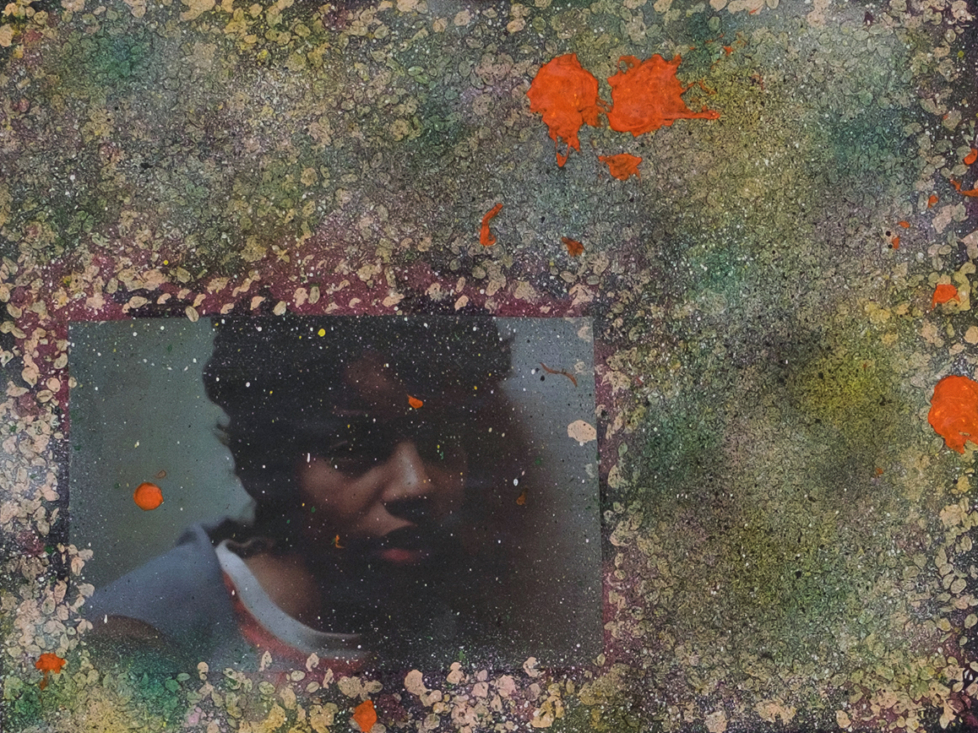
Mickael Marman’s exhibition Heimweh at Centralbanken in Oslo is an elaborate confection of an exhibition. Alongside the biographical and cultural-historical information encapsulated in Marman’s paintings, one is presented with a heterogeneous but concerted assortment of prose. In addition to Centralbanken, gallerist Arild Tveito’s portfolio also includes the exhibition venues Santalorosa and Diorama, and he has shown a playful (the keywords being: hide and seek) approach to the textual mediation of exhibitions, where prose and aliases have been given free reign. The material in Heimweh is authored by the artist himself, as well as by Fatou Åsbakk, Triolet Vida, and Louise Jacobs. Pride of place is given to an entry written by Marman about a tourist’s experiences as an African European among self-actualising white backpackers in Mexico, and about self-securing urban strategies for a non-white subject who largely lives in a homogenous and xenophobic Western Europe. On the whole, Heimweh is very much about how, as an artist and subject, one negotiates the difference between being recognised and acknowledged, how one is seen – for better or worse.
The artist Jacobs has written an impressionist piece about – among other things – the gaze. Artist and author Åsbakk has contributed a letter or travelogue where the city of Bergen and the Berlin nightclub Berghain become one and the same destination, with short chapters framed by advice on how to ‘get in’ to the legendary club, including considerations where the status of the narrator’s body is a factor. I do not know anything about Vida’s professional life, but the text seems as if it might be an adaptation of Erik Poppe and Hans Petter Blad’s script for the cult film Schpaaa (Bunch of Five) from 1998, in which Marman starred as a child actor. Marman also contributes a text describing what it has been like to be associated with “the film,” without naming it.

Hanging in a row across two walls, the fifteen painted collages in Heimweh are relatively modest in size, between 30 x 40 cm and 60 x 70 cm. All consist of hastily applied ornamental arrangements and colour fields, as well as photographs glued onto the raw canvas. Some also have other materials attached: something that looks like aquarium gravel and something I am quite sure is oats. The material images point back to the bricolage optimism found in recent German and North American painting. It also evokes a trick employed by frazzled art teachers back when I was in elementary school, less than a decade after Marman, where pupils were assigned the task of getting stones and cones to stick to photocopy paper by means of glue sticks. The approach simultaneously confuses and informs our reading of the pictures. I am no interior designer, but I do have generational memories of the ‘rustic’ texturing of domestic surfaces widespread in the 1990s. The photographs hovering above the paintings are largely still images from Schpaaa. Many are relatively anonymous, depicting urban scenes captured by the film’s cinematographer John Christian Rosenlund; others are black and white, possibly taken from different sources, showing people with their backs turned towards lens. One of two close-ups included features the artist himself, lit in chiaroscuro.
For those unfamiliar with Schpaaa, it should be noted that the film is a brutal gangster story where all the main characters are children from one of Oslo’s most culturally diverse districts, and that it was written and directed by people who do not share the ethnic and cultural experiences of the children featured. It is an interesting portrait of its times in terms of cinematography, slang, and cultural stereotypes. Based on what can be deduced from Marman’s texts, his participation in the film, which is still circulating in some circles, has been as much a nuisance and obstacle to him as it has been a boon. Now living in Berlin, the artist is a graduate from venerable giants among European academies, specifically those in Hamburg and Frankfurt. Marman writes that he is happy to have taken part in the work, but might have chosen differently in hindsight, precisely because people in Norway and Oslo continued to associate him with the film for a decade after its cinema run.
Marman juggles issues of reputation and reality, notoriety and its justifications in Heimweh, which incidentally means “homesickness.” In a field where visibility is what many crave most of all, it is interesting to see an exhibition that addresses the discomfort of being recognised. Anonymity and visibility are not necessarily privileges one can choose to step in and out of, but conditional benefits.










